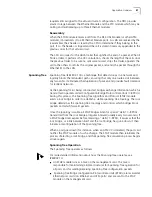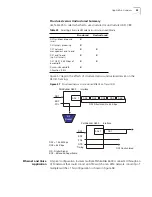
Application Overview
91
Figure 54
Multiframe Structure for 3x64kbit/s DS1 or E1 with CAS
The PathBuilder S600 CBR module can detect the AB bits on the CAS to activate
or de-activate the CBR PVC.
n
When an off-hook signal is detected, the CBR PVC is activated.
n
When an on-hook signal is detected, the CBR PVC is deactivated, freeing up
the network access bandwidth for other uses (such as VBR traffic). This is the
basis for dynamic bandwidth allocation.
Note that a structured DS1 channel will not pass the original DS1 frame to the
remote end. For instance, ESF network management will terminate at the
PathBuilder S600 on a structured DS1, so CSU to CSU Facility Data Link (FDL)
communication will not be possible. FDL communication is possible with
unstructured DS1.
Unstructured DS1
Implement unstructured DS1 service when you want DS1 tunneling through an
ATM system. DS1 tunneling allows an entire DS1 frame including framing bits to
transit an ATM networks. See Figure 55.
Pointer
First Transported Octet of Multiframe
Second Transported Octet of Multiframe
First 125 µsec Frame of Multiframe for
DS1
Second 125 µsec Frame of Multiframe for
DS1
Last 125 µsec Frame of Multiframe for
DS1
Signaling
D f
D for
ported
slot
. . .
AAL1 Pointer
First Transported Octet of Multiframe
Second Transported Octet of Multiframe
First 125 µsec Frame of Multiframe for
DS1
Second 125 µsec Frame of Multiframe f
DS1
Last 125 µsec Frame of Multiframe for
DS1
Signaling
Substructure
ABCD for Second
Transported Timeslot
ABCD for
Third
Transported
Timeslot
ABCD for
First
Transported
Timeslot
. . .
Summary of Contents for 3C63100-AC-C - PathBuilder S600...
Page 8: ...INDEX 3COM CORPORATION LIMITED WARRANTY ...
Page 14: ...xiv CHAPTER SUPPLEMENTARY REGULATORY INFORMATION ...
Page 18: ...18 ABOUT THIS GUIDE ...
Page 28: ...28 CHAPTER 1 SYSTEM DESCRIPTION ...
Page 74: ...74 CHAPTER 3 GETTING STARTED ...
Page 230: ...230 INDEX ...
















































